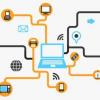Related Content
 |
The Internet of Things Has Changed the Definition of Good Software As the Internet of Things takes hold and more common appliances are run by software, people will be increasingly reliant on programmers’ ability to write good code. But how do we define “good code” or “good software”—and how do we get there? Stefano Rizzo explains eight requirements he thinks are essential. |
|
 |
Testing in the Internet of Things The Internet of Things has made practically our whole world connected. With such a huge amount of data being exchanged, there is a great need for testers who understand how to test in the IoT. Sunil Sehgal explains how testing these devices is a little different from testing other machines or programs. |
|
 |
Mobile Testing: Simulators, Physical Devices, or Both? Simulation has many advantages over physical device testing: It costs less, is more stable, and is easier to scale. So do we really need physical device testing for mobile products? The answer is yes and no. It depends on what aspect of quality you want to validate and where you are in the product lifecycle. |
|
 |
The Future of Cloud Connectivity in an IoT World When new technologies are embraced and popularized, they usually fail sooner rather than later. The IoT, new architectures, and cloud systems are developing into perfect storms that will take time to develop and move on to maturity, finally providing calm, consistent conditions. How should you plan to fail? |
|
 |
A Strange Story of Version Control and Software Customization As he was doing an inventory of a company’s commercial software and version control, Payson Hall got an odd response from a vendor: Their software has no versions. Each client has a unique, customized edition of the software. How can the vendor possibly support that many products? How would that work? |
|
 |
Getting Started with Wearable Devices? Consider This Platform As popular as wearables have become, they pose new challenges for software developers. Size, power consumption, and focused functionality are the main concentrations. There's a host of platforms that offer developers options for creating wearables, but Lance Gleason advocates one you may not have considered. |
|
 |
Deep Dive: Microsoft Explores Ocean Data Centers Data centers are regarded as energy hogs by many, and the hope is that renewable power sources can become a cost-effective alternative. Microsoft recently launched Project Natick to find out if data centers located under the ocean could be a viable possibility. |
|
 |
Has the Mobile Space Stalled? That little rectangular device sitting in your pocket can already do so much, so it’s not as if there’s some terrible drought of innovation in the mobile space. But according to AppDiff.com’s CEO, Jason Arbon, the white hot excitement stemming from mobile phones has cooled. |








